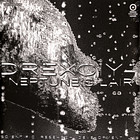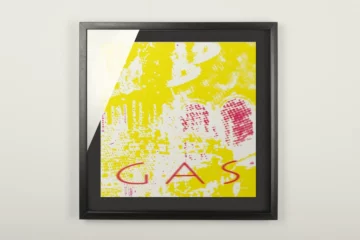The Drexciyan warrior has webbed hands. He wears a diving suit with fins on his arms and legs. His helmet has ribs similar to those of a shell.
The image of these underwater warriors adorns the cover of Drexciya‘s 1999 album »Neptune’s Lair« , the duo’s first ›real‹ album after the compilation of their early EP »The Quest« (1997). With Drexciyan Warriors, Drexciya continue their myth, according to which Drexciya is an underwater land in the Atlantic Ocean. Its inhabitants are descended from the unborn children of pregnant women thrown overboard from slave ships. In an evolutionary leap, the budding Drexciyans became accustomed to breathing underwater while still in the womb. And they learned to be fierce.

Neptune's Lair
With this maritime Afrofuturist design and a strategy of anonymity, Drexciya created a mystery around themselves. The enigma remained until the death of James Stinson, one half of the band, in 2002. But even though the identities of both Stinson and his former partner Gerald Donald have been known for more than 20 years, Drexciya’s music has not suffered.
What makes their »sound« so incredibly unchanged is, on the one hand, the almost primitive, machine-like hardness of their equipment, which seems to rattle along without refinement, but has a precise funk that only Drexciya have been able to achieve so far. On the other hand, the harmonies and melodies they dare to use are so direct, and sometimes with so much soul, that they narrowly avoid kitsch. The title »Andreaen Sand Dunes« even has a downright wistful melody, but Drexciya limit themselves to a few notes, thus condensing the six-minute track despite its loose arrangement. It is techno, after all.
Stingray groove
At the other end of the spectrum are tracks like »Lost Vessel«, with a hard, straightforward beat backed up by a two-tone bass that jumps up and down an octave. Genially raw. Again Drexciya add a melody, again very short, but all the more energetic. Typical stingray groove.
Twenty-five years ago, this was far from being a matter of course. It was the heyday of minimal techno or glitch (Mille Plateaux’s »Clicks & Cuts« series would begin shortly after 2000), two genres that reduced funk to the barest gestures, if not eliminating it altogether. Drexciya, on the other hand, experienced something of a return to the rawness of funk, which they didn’t translate one-to-one into machine form, but incorporated into their pieces as a clearly recognisable model.
What makes the Drexciya »sound« so incredibly unchanged is, mainly, the almost primitive, machine-like hardness of their equipment, which seems to rattle along in an uncomplicated way, but has a precise funk that only Drexciya have been able to achieve so far.
Drexciya do not stubbornly follow the same formula from track to track. There are 21 tracks on the album, some of which serve as short interludes or drum-computer-free preludes, such as »Quantum Hydrodynamics«, which, with its menacing synth motifs and bubbling effects in the background, is a perfect prelude to »Lost Vessel«. In places like this, the album’s choreography delivers something of a soundtrack to Drexciya’s sea tale. In general, many of the sounds are reminiscent of water in motion, which may also be favoured by the story behind this music. Thomas Meinecke, for example, asks in his novel »Hellblau«, about the relationship between music and accompanying texts in order to explain why Drexciya’s music »appears to him as a radically dissident political medium«.
Drexciya’s traditionally conscious, futuristic techno that was driven by an entirely unique vision would be enough for a series of further albums by the duo under various names. The results of this »scientific research development lab« are still valid today. They also set a standard that is still unsurpassed. As the voice in the intro says: »Las putas conoce nada de techno«.









